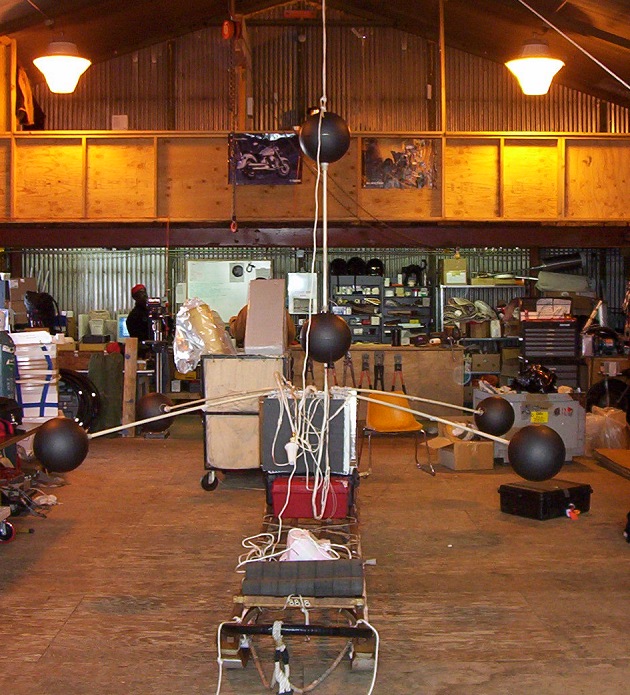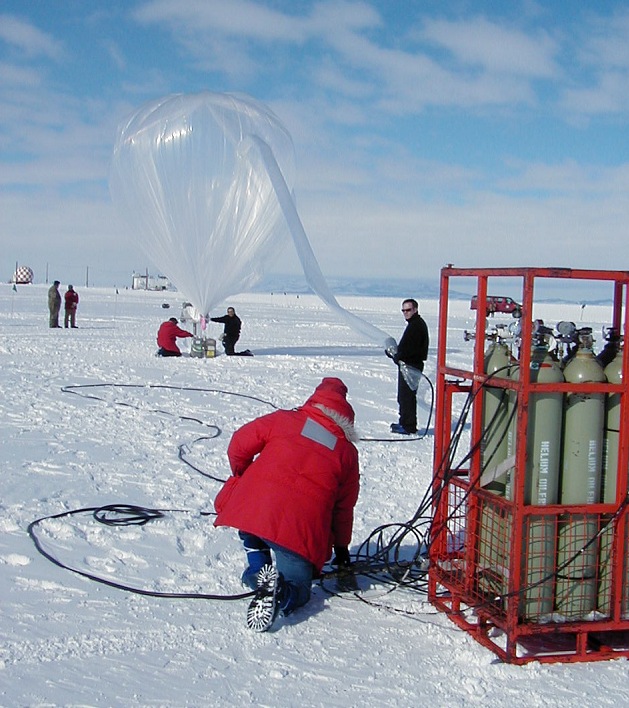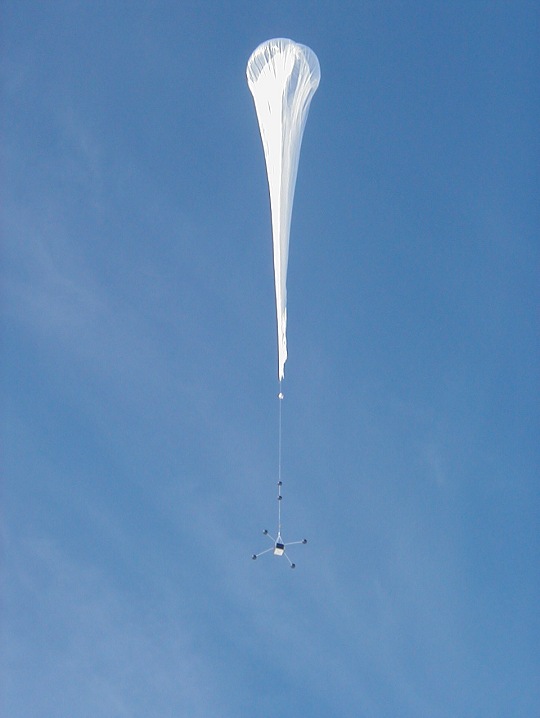Purpose of the flight and payload description
This was an engineering flight in advance of the MINIS balloon campaign which was designed to observe dusk-side relativistic electron precipitation events from multiple locations to study spatial extent and variation, north-south conjugacy, and evolution as electrons drift over several hours of local time. MINIS was carried out in January 2005 and consisted of four payloads launched from SANAE station in Antarctica, and two payloads launched from Ft. Churchill, Canada, while this preliminar flight was launched in December 2013 from McMurdo Station.
The primary instrument was a 3"x 3" NaI scintillator for detecting bremsstrahlung X-rays. The payloads were battery-powered and telemetered data using the Iridium network. Total weight was about 40 kg and was designed to drift for 24 hours following launch from the northern location or near eight days in Antarctica. Spectra from 20 keV to 10 MeV were returned in 208 energy channels every 8 seconds, and count rates in four broad energy channels 20-175 keV, 175-540 keV, 540-825 keV, and 825-1500 keV were recorded at 20 Hz. Also were included electric and magnetic DC field and VLF wave instruments.
Details of the balloon flight
Balloon launched on: 12/15/2003 at 9:40 utc
Launch site: Williams Field, McMurdo Station, Antarctica
Balloon launched by: University of Houston
Balloon manufacturer/size/composition: Zero Pressure Balloon 500.000 cuft
End of flight (L for landing time, W for last contact, otherwise termination time): 12/17/2003 at 5:58 utc
Balloon flight duration (F: time at float only, otherwise total flight time in d:days / h:hours or m:minutes - ): ~ 30 h
Landing site: Last known position 77.68 S, 127.87 E - Not recovered
Payload weight: 40 kg
The goal of the flight was to test the suite of small instruments, the flight control computer, and the Iridium modem-based telemetry system. The flight plan contemplated to lift the payload to 30 km altitude where it would ride winds westward around Antarctica for about 5 days and collect data.
After launched, the balloon was ascending through the tropopause to about 14km when the balloon failed and quickly descended. The payload landed on Mount Discovery where it was dragged for some hours by the huge sail of the balloon. Eventually, enough parts broke off allowing the balloon-payload combination to became buoyant, and it rose from the mountain. The telemetry system, GPS receiver, flight computer, and power system continued to work after the unexpected descent and dragging episode. The aspect magnetometer, sun sensors, x-ray spectrometer, and temperature sensors also continued to function.
Neither the balloon nor payload were recovered.
External references
- MINIS test in Antarctica Washington University website
4537If you consider this website interesting or useful, you can help me to keep it up and running with a small donation to cover the operational costs. Just the equivalent of the price of a cup of coffee helps a lot.




